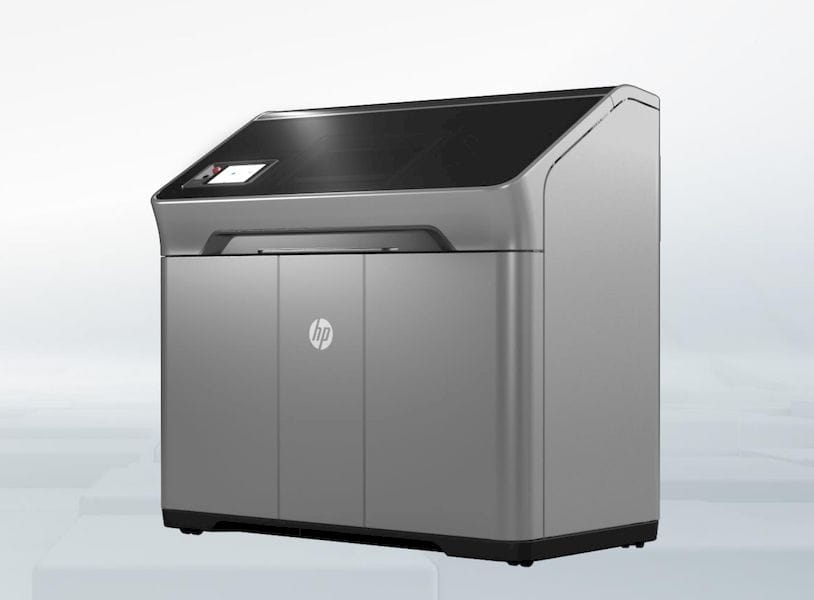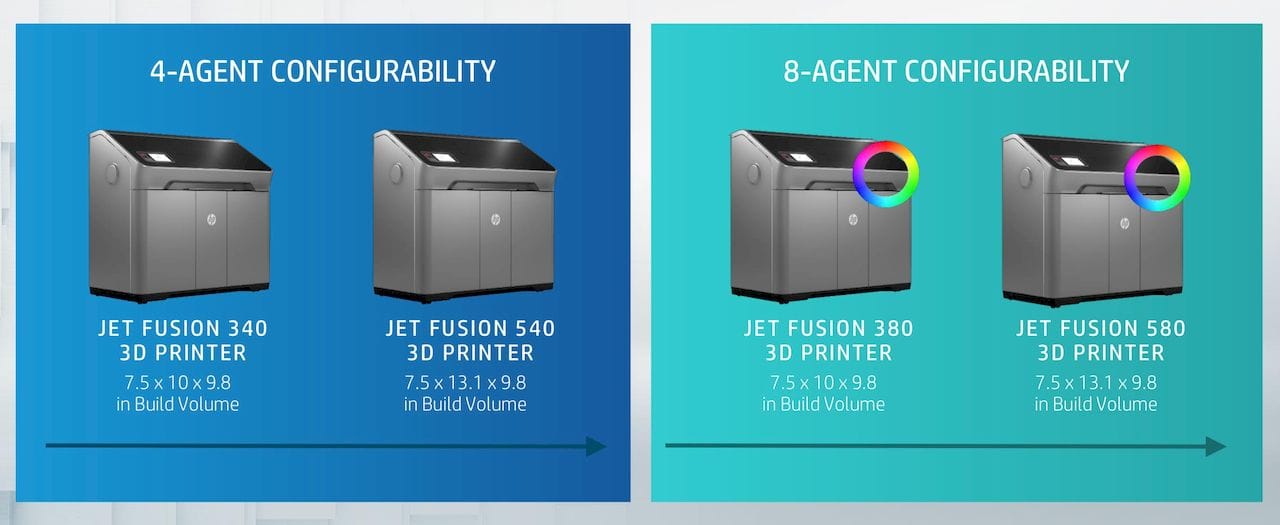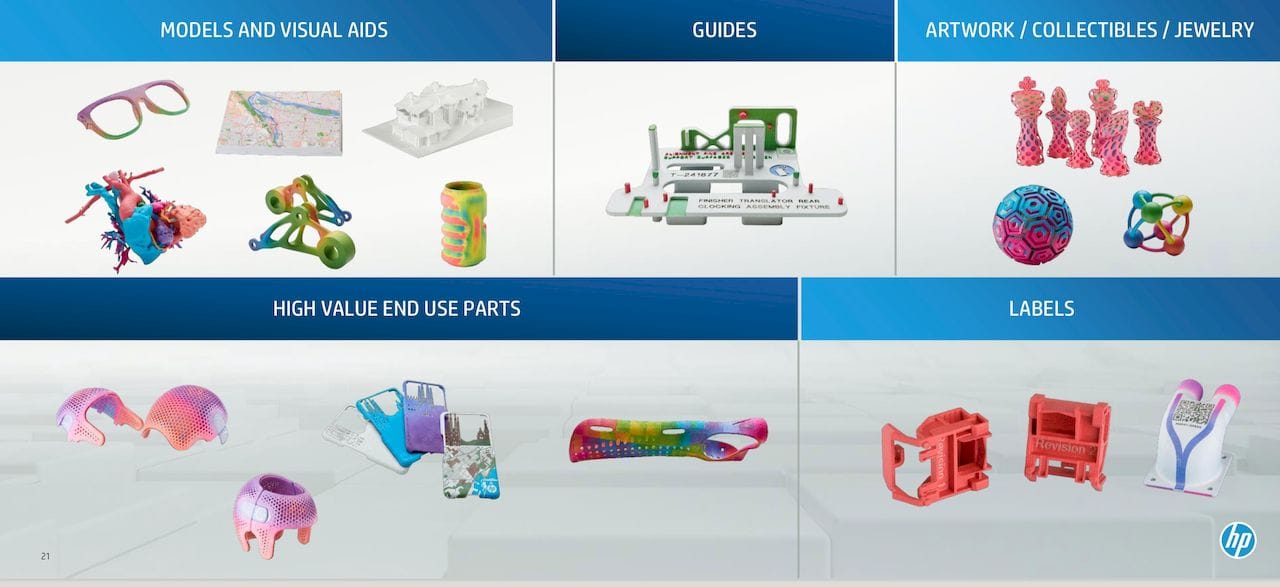
Today HP made several moves that should shake up their competitors.
One of the announcements centered on new 3D printers, another involved an important software development, and finally they made moves to increase their reseller network that seem quite ingenious.
But let’s talk about the hardware first.
In 2H18 HP will release four new lower-cost 3D printer models, the 340, 380, 540 and 580 units. They’re all quite similar, except:
- The 3xx series offer black and white prints
- The 5xx series offers full CYMK color prints!
- The x40 series has a build volume of 190 mm x 254 mm x 248 mm
- The x80 series has a build volume of 190 mm x 332 mm x 248 mm, a bit larger

All devices are fully MJF, the 3D printing process used by HP. This means these machines should be able to handle any MJF-compatible materials, including some that have not even been announced yet.
MJF is a fascinating 3D printing process that enables voxel-level control of prints. You read that right: every single voxel can be, in theory, a different material. Or color, in the case of the new 540 and 580 machines.
MJF does this by using inkjet-style deposition of liquid material on a powder bed. While that sounds somewhat like other 3D printing processes, HP adds the concept of an “agent” droplet that can change the properties of each voxel. So, for example, you could mix CMYK inks at an agent level and reproduce any color you want – per voxel!
To explain this a bit more, the 5×0 series can inject up to 8 agents per voxel, while the 3×0 series can do only up to 4, hence it’s black or white ability.
There have been a few full color 3D printer options available in the past, but as we discussed the other day, the quality of the color is often not up to designer requirements. However, in the case of HP’s new machine, I suspect they may do quite well (although we have not yet seen a color print sample yet), simply because the company has literally decades of experience devising color systems for paper printing. That extensive expertise is now leverageable in the 3D implementation of color.

One constraint on the MJF process is that the build chamber is heated post printing to sinter the required particles together. Because of the large size of the build chamber, it takes a significant number of hours for the build chamber to cool down and allow removal of the prints. This meant that for efficiency’s sake you would most likely print a large batch of prints in each print job, because you’d be waiting a long time between prints. HP’s previous 3D printers were really not tuned for doing one-off prints. They are essentially production machines.
But now there is an interesting strategy at play with the new machines. They all have smaller build volumes, which translates into shorter cool down times. They are also priced far less than the first HP 3D printers, with prices ranging from USD$50K to “low USD$100Ks”.
Another very interesting feature is the ability to 3D print less than a full build volume to further reduce the cool down time. HP says a full build will print around 52 uniformly-sized parts and require 15 hours for both printing and cool down combined. But if you 3D printed say, only 5 parts of the same size in about 10% of the build volume, only four hours of print and cool down would be required.
These prices and features place the new 340, 540, 380 and 580 into a new market for HP: prototyping, or at least that their target with these devices.
HP believes they fit within the price-performance envelope for engineers and designers doing prototypes. While I suspect basic prototypes could be easily made on equipment at far lower price than even HP’s new equipment, there is something else to consider.
The new HP machines use the same production materials that their larger machines employ. This means that “prototyping” on an HP machine would be the making of a truly physically representative part, rather than just the basic shape made on other machines using alternate materials.
I think this is a very good step for HP, hardware-wise.
But the company also made two other announcements. One is a partnership with Solidworks for developing a means to actually use the voxel-level control abilities of their hardware – once again, hardware is far ahead of the software. I’ll find out more about this at Solidworks this week and produce some thoughts later.
Finally, HP also announced a new reseller strategy, but that deserves another post.
Via HP

